Polysciences stocks a wide portfolio of Monomers. Such variety offers the synthetic chemist tools to make a rich array of polymer compositions. Discover monomers that may be used to synthesize custom polymers to meet the your specific needs. Detailed information and chemical structures are included on product pages. Please select Monomer products to review from categories in the left navigation menu.
-
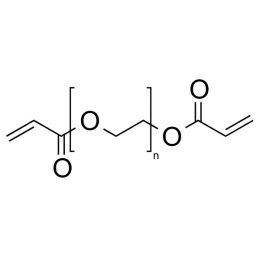 Polyethylene glycol diacrylate (PEGDA 200)Catalog Number 00669
Polyethylene glycol diacrylate (PEGDA 200)Catalog Number 00669Long-chain, hydrophilic, crosslinking monomer. MW PEG Block = 200
-
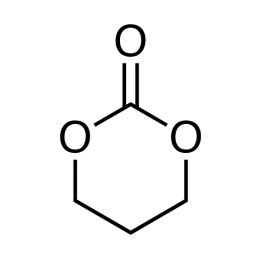 Trimethylene Carbonate (1, 3-Dioxan-2-one) (TMC)Catalog Number 25768
Trimethylene Carbonate (1, 3-Dioxan-2-one) (TMC)Catalog Number 25768Trimethylene carbonate is a monomer used to manufacture biodegradable polymers used in medical devices. Polysciences trimethylene carbonate is manufactured under cGMP conditions and has purity >99.0%. Please call for multi-kilogram bulk quotes.
-
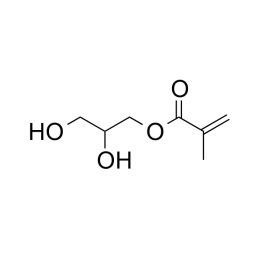 Glycerol monomethacrylateCatalog Number 04180
Glycerol monomethacrylateCatalog Number 04180Hydrophilic monomer useful in hydrogel preparation.
-
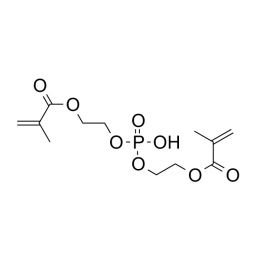 Bis(2-methacryloxyethyl) phosphateCatalog Number 16041
Bis(2-methacryloxyethyl) phosphateCatalog Number 16041Crosslinking monomer. Adhesion promoter through free phosphoric acid group.
-
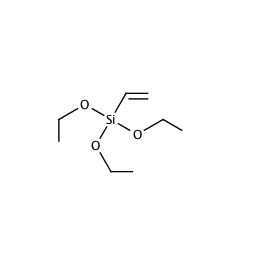 VinyltriethoxysilaneCatalog Number 04537Inquire for availability.Phone: 1(800)523-2575Email: [email protected]
VinyltriethoxysilaneCatalog Number 04537Inquire for availability.Phone: 1(800)523-2575Email: [email protected]For introducing sites into polymers which adhere to silaceous surfaces. Moisture sensitive.
-
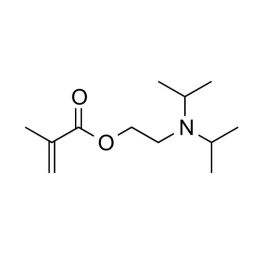 2-Diisopropylaminoethyl methacrylateCatalog Number 24263
2-Diisopropylaminoethyl methacrylateCatalog Number 24263Used for improving antistatic properties of synthetic fibers, improved resistance of fibers and polymers to degradation by chlorine and UV, and improved adhesion.
-
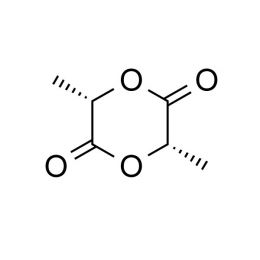 L(-)-LactideCatalog Number 05749
L(-)-LactideCatalog Number 05749Synthesis of biodegradable homo- and copolymers
Purity: ≥ 99.5% (GC)
-
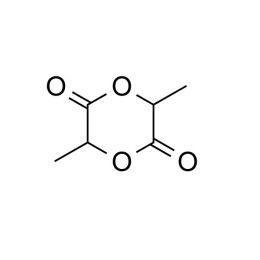 DL-LactideCatalog Number 16640
DL-LactideCatalog Number 16640Synthesis of biodegradable homo- and copolymers.
Purity: ≥ 99.5% (GC)
-
 N-DodecylacrylamideCatalog Number 25723Long-chain amide monomer.
N-DodecylacrylamideCatalog Number 25723Long-chain amide monomer. -
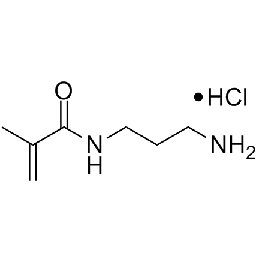 N-(3-Aminopropyl)methacrylamide hydrochloride, >98%Catalog Number 21200
N-(3-Aminopropyl)methacrylamide hydrochloride, >98%Catalog Number 21200Primary amine monomer.
Hydrolytically stable for preparation of polymers containing primary amine functionality.
-
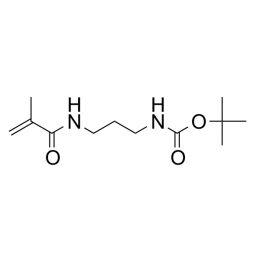 N-(3-BOC-aminopropyl)methacrylamideCatalog Number 24318
N-(3-BOC-aminopropyl)methacrylamideCatalog Number 24318Also known as tert-Butyl (3-methacrylamidopropyl)carbamate, is a blocked primary amine monomer, that readily polymerizes with other vinylic monomers. The t-BOC group, widely used in the peptide chemistry, can be easily deprotected to the free amine with a variety of reagents including HCl/MeOH, Me3Sil, or heat (185°C).
-
 Nile Blue AcrylamideCatalog Number 25395
Nile Blue AcrylamideCatalog Number 25395Nile Blue dye itself is a fluorescent dye that is used routinely in histology to impart a blue color to cell nuclei, where it highlights the distinction between neutral lipids (triglycerides, etc.) which are stained pink and fatty acids, which are stained blue.
Nile Blue Acrylamide has been used to covalently link Nile Blue dye into the backbone of polymers for use in various sensor applications. Chandrasekharan, et al have developed a plasticizer-free autoclavable ratiometric alcohol sensor based on Nile Blue methacrylamide incorporated into a hydrogel polymer backbone.1 The film formed from the Nile Blue hydrogel exhibits both absorption and fluorescent changes upon contact with ethanol, and the fluorescences Lmax decreases with the increase of ethanol concentration. The sensor can therefore be used to accurately determine ethanol concentration in a system.
Store: in dark at 0º C
-
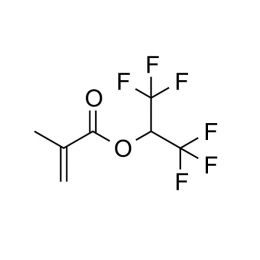 Hexafluoro-iso-propyl methacrylateCatalog Number 02401
Hexafluoro-iso-propyl methacrylateCatalog Number 02401Low refractive index monomer.
Polymer RI (n20/D): ~1.38
-
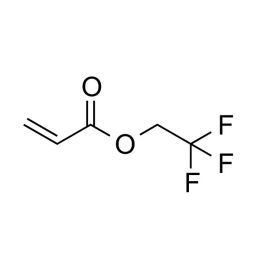 2,2,2-Trifluoroethyl acrylateCatalog Number 01718
2,2,2-Trifluoroethyl acrylateCatalog Number 01718For reduced refractive index (1.407) polymers.
-
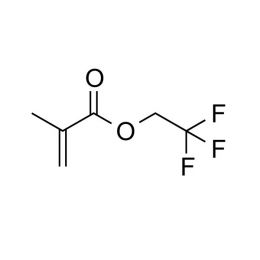 2,2,2-Trifluoroethyl methacrylateCatalog Number 02622
2,2,2-Trifluoroethyl methacrylateCatalog Number 02622For reduced refractive index (1.437) polymers.
-
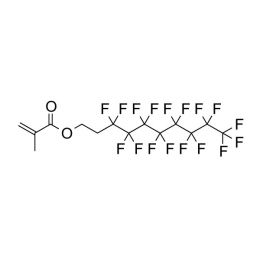 1H,1H,2H,2H-Heptadecafluorodecyl methacrylate (HDFDMA)Catalog Number 19226
1H,1H,2H,2H-Heptadecafluorodecyl methacrylate (HDFDMA)Catalog Number 19226Low refractive index monomer.
Polymer RI (n20/D): ~1.35
-
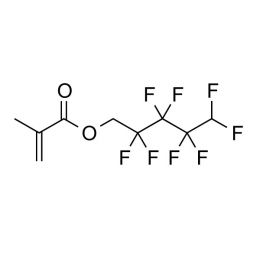 1H,1H,5H-Octafluoropentyl methacrylate, min. 98%Catalog Number 21045
1H,1H,5H-Octafluoropentyl methacrylate, min. 98%Catalog Number 21045Low refractive index monomer.
Polymer RI (n20/D): ~1.39
-
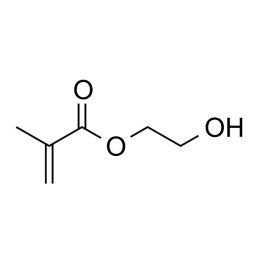 2-Hydroxyethyl methacrylate (HEMA), Technical GradeCatalog Number 00227
2-Hydroxyethyl methacrylate (HEMA), Technical GradeCatalog Number 002272-Hydroxyethyl methacrylate (HEMA) is perhaps the most widely studied and used neutral hydrophilic monomer. The monomer is soluble, its homopolymer is water-insoluble but plasticized and swollen in water. This monomer is the basis for many hydrogel products such as soft contact lenses, as well as polymer binders for controlled drug release, absorbants for body fluids and lubricious coatings. As a comonomer with other ester monomers, HEMA can be used to control hydrophobicity or introduce reactive sites.
-
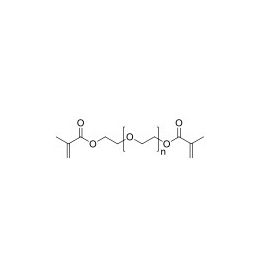 Polyethylene glycol dimethacrylate (PEGDMA 600)Catalog Number 02364
Polyethylene glycol dimethacrylate (PEGDMA 600)Catalog Number 02364Long-chain hydrophilic, crosslinking monomer. Molecular weight of PEG unit is approximately 600.
-
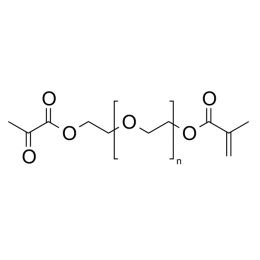 Polyethylene glycol dimethacrylate (PEGDMA 200)Catalog Number 00096
Polyethylene glycol dimethacrylate (PEGDMA 200)Catalog Number 00096Long-chain hydrophilic, crosslinking monomer. Molecular weight of PEG unit is approximately 200.
-
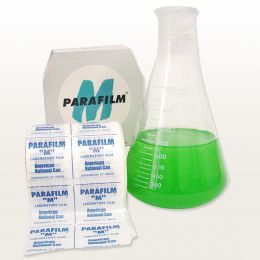 Parafilm, 4" x 250' per rollCatalog Number 3989A
Parafilm, 4" x 250' per rollCatalog Number 3989AUsed for sealing or protecting vessels such as flasks or cuvettes. Molds quickly and seals laboratory vessels with a disposable translucent film. Parafilm is stretchable, moldable, waterproof, odorless, thermoplastic and self-adhering.
-
 D.E.R. (Dow epoxy resins), Grade 736Catalog Number 02923
D.E.R. (Dow epoxy resins), Grade 736Catalog Number 02923 -
 3-Sulfopropyl methacrylate, potassium saltCatalog Number 17210
3-Sulfopropyl methacrylate, potassium saltCatalog Number 17210 -
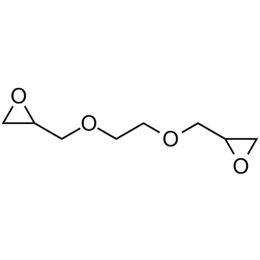 Ethylene glycol diglycidyl ether (EGDGE)Catalog Number 01479
Ethylene glycol diglycidyl ether (EGDGE)Catalog Number 01479 -
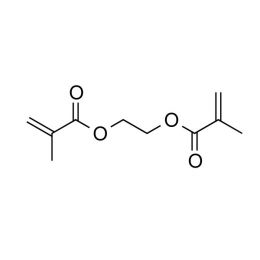 Ethylene Glycol Dimethacrylate, 99.7% (EGDMA)Catalog Number 24896High purity monomer for contact lens applications. Ethylene Glycol Dimethacrylate is useful as a high purity crosslinker with bridging/specialty capability between polymer chains.
Ethylene Glycol Dimethacrylate, 99.7% (EGDMA)Catalog Number 24896High purity monomer for contact lens applications. Ethylene Glycol Dimethacrylate is useful as a high purity crosslinker with bridging/specialty capability between polymer chains. -
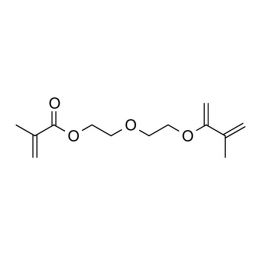 Diethylene glycol dimethacrylateCatalog Number 02214
Diethylene glycol dimethacrylateCatalog Number 02214 -
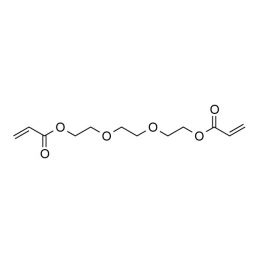 Triethylene glycol diacrylate (TriEGDA)Catalog Number 02655
Triethylene glycol diacrylate (TriEGDA)Catalog Number 02655 -
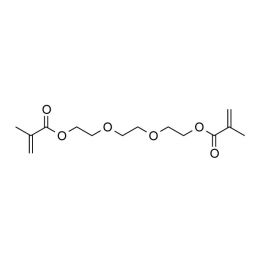 Triethylene glycol dimethacrylate, min 95%Catalog Number 24034
Triethylene glycol dimethacrylate, min 95%Catalog Number 24034 -
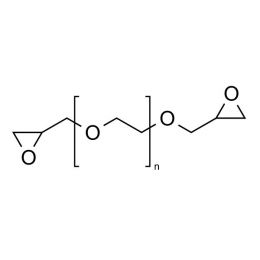 Poly(ethylene glycol) diglycidyl ether (PEGDGE 200)Catalog Number 08209
Poly(ethylene glycol) diglycidyl ether (PEGDGE 200)Catalog Number 08209 -
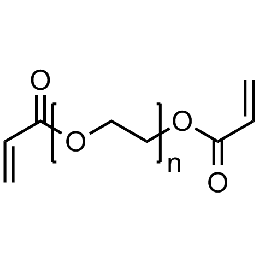 Polyethylene glycol diacrylate (PEGDA 400)Catalog Number 01871
Polyethylene glycol diacrylate (PEGDA 400)Catalog Number 01871 -
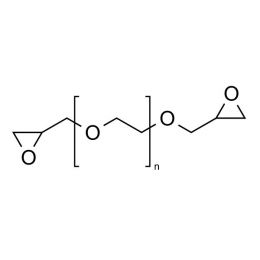 Poly(ethylene glycol) diglycidyl ether (PEGDGE 400)Catalog Number 08210
Poly(ethylene glycol) diglycidyl ether (PEGDGE 400)Catalog Number 08210 -
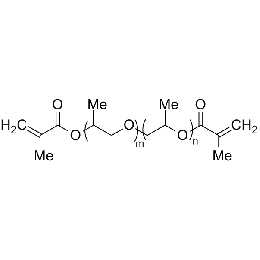 Poly(propylene glycol) (400) dimethacrylate (PPGDMA 400)Catalog Number 04380
Poly(propylene glycol) (400) dimethacrylate (PPGDMA 400)Catalog Number 04380 -
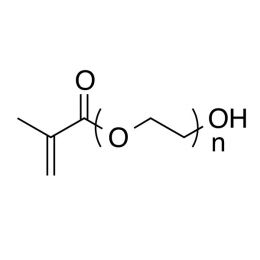 Polyethylene glycol monomethacrylate (PEGMA 440)Catalog Number 24890
Polyethylene glycol monomethacrylate (PEGMA 440)Catalog Number 24890 -
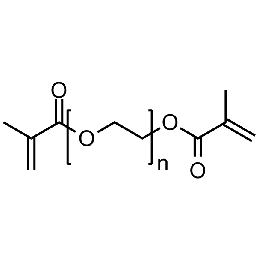 Polyethylene glycol dimethacrylate (PEGDMA 1000)Catalog Number 15178
Polyethylene glycol dimethacrylate (PEGDMA 1000)Catalog Number 15178 -
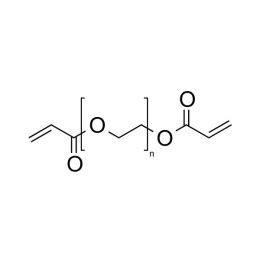 Polyethylene glycol diacrylate (PEGDA 4000)Catalog Number 15246
Polyethylene glycol diacrylate (PEGDA 4000)Catalog Number 15246 -
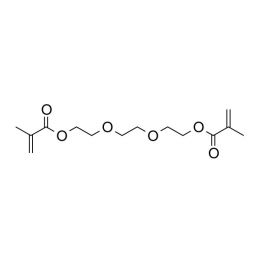 Triethylene glycol dimethacrylateCatalog Number 01319
Triethylene glycol dimethacrylateCatalog Number 01319 -
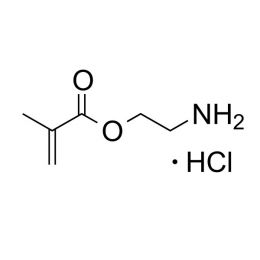 2-Aminoethyl methacrylate hydrochloride, min. 95%Catalog Number 21002
2-Aminoethyl methacrylate hydrochloride, min. 95%Catalog Number 21002For preparation of polymers containing primary amine groups and preparation of specialty methacrylate monomers.
-
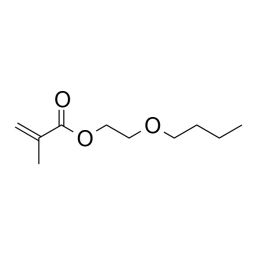 2-n-Butoxyethyl methacrylate, ~97%Catalog Number 02034
2-n-Butoxyethyl methacrylate, ~97%Catalog Number 02034For low Tg polymers having higher polarity than alkyl methacrylate polymers.
-
 Phosphoric acid 2-hydroxyethyl acrylate esterCatalog Number 22468
Phosphoric acid 2-hydroxyethyl acrylate esterCatalog Number 22468Water-soluble phosphoric acid ester monomer. Contains Bis(2-Acryloxyethyl) Phosphate.
-
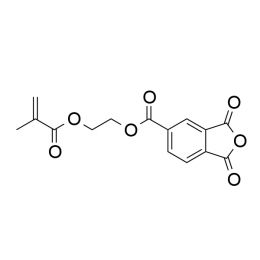 4-Methacryloxyethyl trimellitic anhydrideCatalog Number 17285
4-Methacryloxyethyl trimellitic anhydrideCatalog Number 17285Reactive monomer, especially in dental applications. Used as adhesion promoter.
-
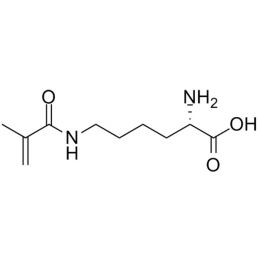 Methacryloyl-L-LysineCatalog Number 24315
Methacryloyl-L-LysineCatalog Number 24315This monomer can be used as a building block for producing custom made polymers with pendant amine functionality.
-
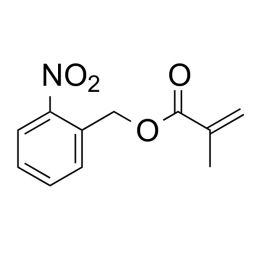 o-Nitrobenzyl methacrylate, min. 95%Catalog Number 24360
o-Nitrobenzyl methacrylate, min. 95%Catalog Number 24360Blocked carboxylic acid monomer
-
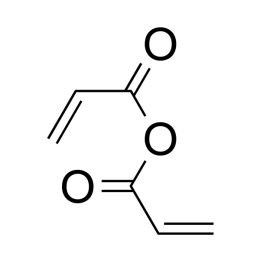 Acrylic anhydride min. 90%Catalog Number 00488
Acrylic anhydride min. 90%Catalog Number 00488Used to prepare specialty acrylate, acrylamide monomers. Forms cyclic anhydrides on polymerization and does not produce crosslinks in polymers.
-
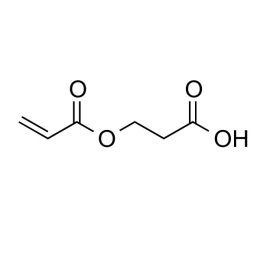 Beta-Carboxyethyl Acrylate, DistributionCatalog Number 24891
Beta-Carboxyethyl Acrylate, DistributionCatalog Number 24891 -
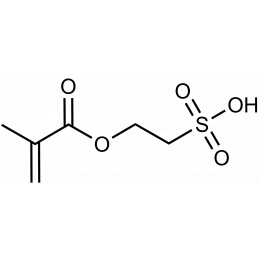 2-Sulfoethyl methacrylate, >90%Catalog Number 02597
2-Sulfoethyl methacrylate, >90%Catalog Number 02597Water-soluble monomer. Used to introduce polar sites into polymer chains, confer shear stability to aqueous polymer dispersions.
-
 N-(n-Octadecyl)acrylamideCatalog Number 04673
N-(n-Octadecyl)acrylamideCatalog Number 04673Hydrophobic acrylamide monomer.
-
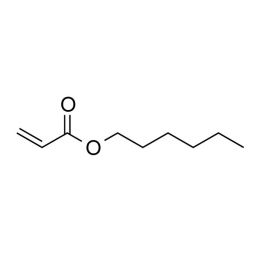 n-Hexyl acrylate, min. 98%Catalog Number 02411Inquire for availability.Phone: 1(800)523-2575Email: [email protected]
n-Hexyl acrylate, min. 98%Catalog Number 02411Inquire for availability.Phone: 1(800)523-2575Email: [email protected]Hydrophobic, low Tg, ester monomer.
-
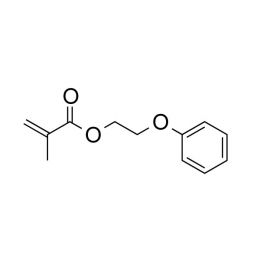 2-Phenoxyethyl methacrylateCatalog Number 02640
2-Phenoxyethyl methacrylateCatalog Number 02640UV absorbing monomer. Polymer n = ~1.5
-
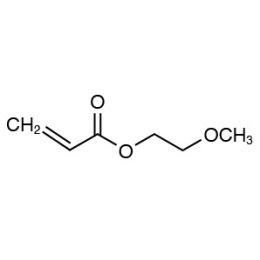 2-Methoxyethyl acrylateCatalog Number 02487
2-Methoxyethyl acrylateCatalog Number 02487Low Tg, more polar than butyl acrylate.
-
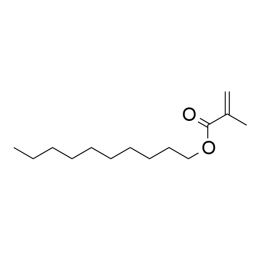 n-Decyl methacrylate, 99%Catalog Number 23344
n-Decyl methacrylate, 99%Catalog Number 23344High-purity hydrophobic ester monomer, forms oil-soluble polymers.
-
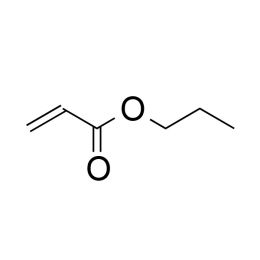 n-Propyl acrylateCatalog Number 03132
n-Propyl acrylateCatalog Number 03132Neutral ester monomer.
-
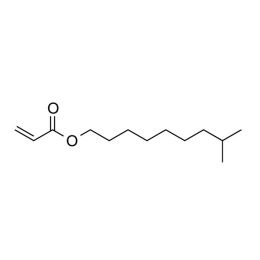 iso-Decyl acrylateCatalog Number 03008
iso-Decyl acrylateCatalog Number 03008Hydrophobic ester monomer. Forms hydrocarbon-soluble polymers.
-
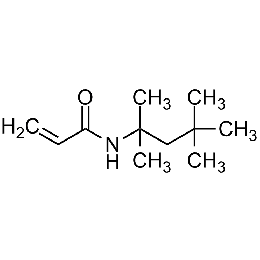 N-tert-OctylacrylamideCatalog Number 03141
N-tert-OctylacrylamideCatalog Number 03141Hydrophobic acrylamide derivative.
-
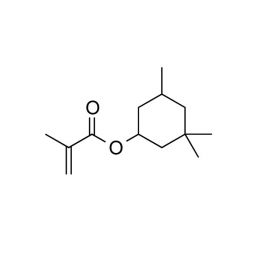 3,3,5-Trimethylcyclohexyl methacrylateCatalog Number 02660Inquire for availability.Phone: 1(800)523-2575Email: [email protected]
3,3,5-Trimethylcyclohexyl methacrylateCatalog Number 02660Inquire for availability.Phone: 1(800)523-2575Email: [email protected]Ester monomer having a bulky alkyl group.
-
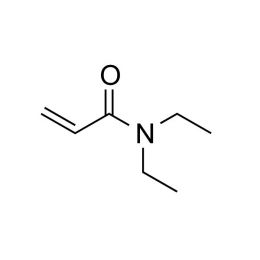 N,N-Diethylacrylamide, min. 95%Catalog Number 00871
N,N-Diethylacrylamide, min. 95%Catalog Number 00871Substituted acrylamide monomer.
-
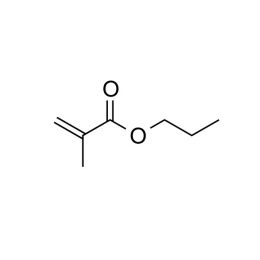 n-Propyl methacrylateCatalog Number 03174
n-Propyl methacrylateCatalog Number 03174Neutral ester monomer.
-
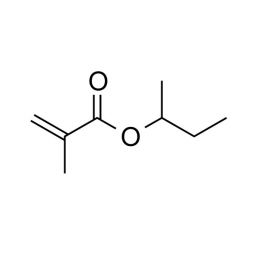 sec-Butyl methacrylateCatalog Number 02057
sec-Butyl methacrylateCatalog Number 02057Forms hydrophobic polymers soluble in hydrocarbons.
-
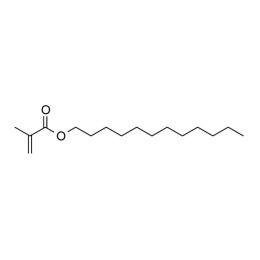 n-Dodecyl methacrylateCatalog Number 02461
n-Dodecyl methacrylateCatalog Number 02461Preparation of hydrophobic polymers.
-
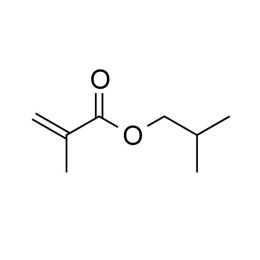 iso-Butyl methacrylateCatalog Number 02056
iso-Butyl methacrylateCatalog Number 02056Forms hydrophobic polymers soluble in hydrocarbons.
-
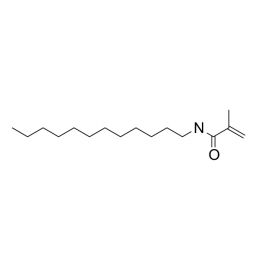 N-DodecylmethacrylamideCatalog Number 04135
N-DodecylmethacrylamideCatalog Number 04135Hydrophobic, long-chain alkyl-substituted amide monomer.
-
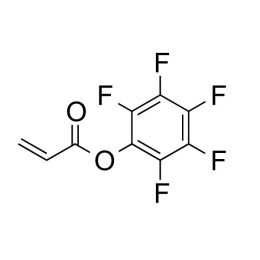 Pentafluorophenyl acrylateCatalog Number 06349
Pentafluorophenyl acrylateCatalog Number 06349Low refractive index monomer.
Polymer RI (n20/D): ~1.40
-
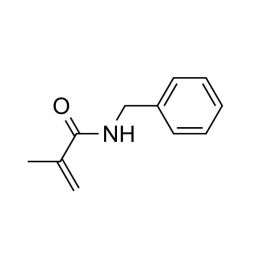 N-BenzylmethacrylamideCatalog Number 17969
N-BenzylmethacrylamideCatalog Number 17969Used to make polymers of high (1.5965) refractive index.
-
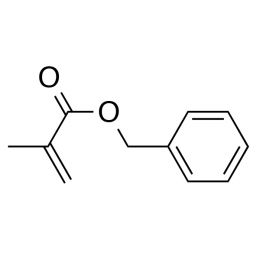 Benzyl methacrylate, min. 95%Catalog Number 02000
Benzyl methacrylate, min. 95%Catalog Number 02000Used to make polymers of high (1.5680) refractive index.
-
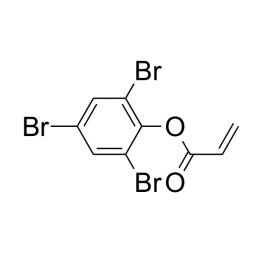 2,4,6-Tribromophenyl acrylateCatalog Number 03330
2,4,6-Tribromophenyl acrylateCatalog Number 03330For high refractive index (n ~ 1.60) polymers
-
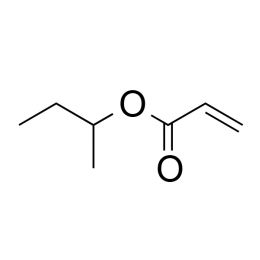 sec-Butyl acrylateCatalog Number 02038Inquire for availability.Phone: 1(800)523-2575Email: [email protected]
sec-Butyl acrylateCatalog Number 02038Inquire for availability.Phone: 1(800)523-2575Email: [email protected]Hydrophobic acrylate ester having Tg similar to the less hydrophobic ethyl acrylate.
-
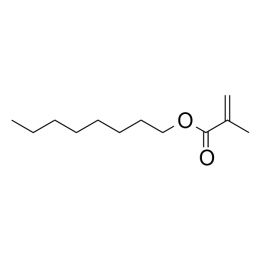 n-Octyl methacrylate, 99+%Catalog Number 23355
n-Octyl methacrylate, 99+%Catalog Number 23355Hydrophobic methacrylate monomer.
99+%
-
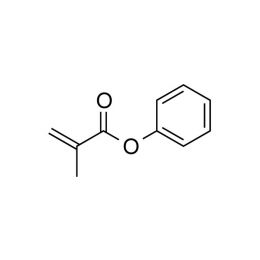 Phenyl methacrylate, >95%Catalog Number 02644
Phenyl methacrylate, >95%Catalog Number 02644Moderate UV absorbing monomer.
-
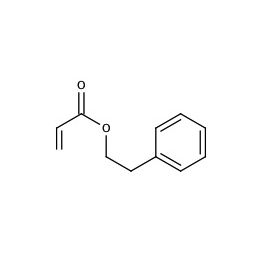 2-Phenylethyl acrylate, min. 92%Catalog Number 02834
2-Phenylethyl acrylate, min. 92%Catalog Number 02834Moderate UV absorbing monomer useful for ophthalmic applications. Polymer n = ~1.55
-
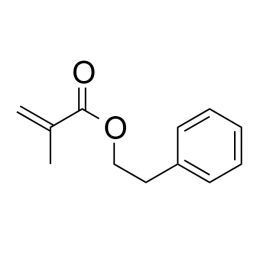 2-Phenylethyl methacrylate, min. 99%Catalog Number 02911
2-Phenylethyl methacrylate, min. 99%Catalog Number 02911Moderate UV absorbing monomer useful for ophthalmic applications. Polymer n = 1.55
-
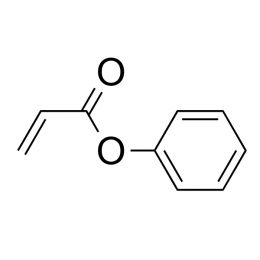 Phenyl acrylate, min. 95%Catalog Number 02642
Phenyl acrylate, min. 95%Catalog Number 02642UV absorbing monomer. Polymer n = ~1.55
-
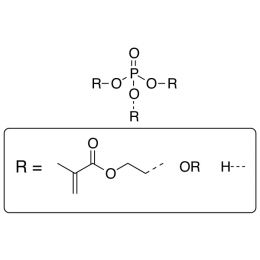 2-(methacryloxy)ethyl phosphateCatalog Number 25422
2-(methacryloxy)ethyl phosphateCatalog Number 25422Contains 700-1000 ppm monomethyl ether hydroquinone and approximately 25% of diester.
-
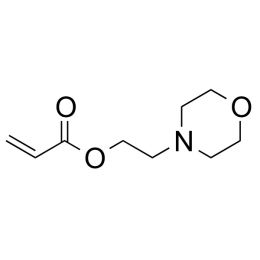 2-N-Morpholinoethyl acrylate, 95%Catalog Number 17977
2-N-Morpholinoethyl acrylate, 95%Catalog Number 17977Cationic monomer.
-
![N-[3-(N,N-Dimethylamino)propyl] methacrylamide](https://www.polysciences.com/media/catalog/product/cache/41caa8e834a03fb3ab31ba2c24269124/0/9/09656_1.jpg) N-[3-(N,N-Dimethylamino)propyl] methacrylamideCatalog Number 09656
N-[3-(N,N-Dimethylamino)propyl] methacrylamideCatalog Number 09656For preparation of cationic polymers, especially quaternary ammonium polymers. Monomer is more hydrolytically stable than corresponding esters
-
![N-[2-(N,N-Dimethylamino)ethyl]methacrylamide](https://www.polysciences.com/media/catalog/product/cache/41caa8e834a03fb3ab31ba2c24269124/0/6/06172.jpg) N-[2-(N,N-Dimethylamino)ethyl]methacrylamideCatalog Number 06172
N-[2-(N,N-Dimethylamino)ethyl]methacrylamideCatalog Number 06172Amine-functional methacrylamide derivative
-
![N-[3-(N,N-Dimethylamino)propyl] acrylamide, min.95%](https://www.polysciences.com/media/catalog/product/cache/41caa8e834a03fb3ab31ba2c24269124/2/2/22018.jpg) N-[3-(N,N-Dimethylamino)propyl] acrylamide, min.95%Catalog Number 22018
N-[3-(N,N-Dimethylamino)propyl] acrylamide, min.95%Catalog Number 22018For preparation of cationic polymers, especially quaternary ammonium polymers
-
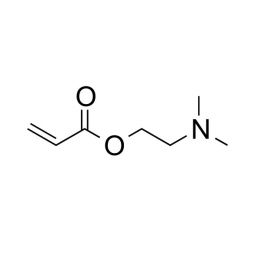 2-(N,N-Dimethylamino)ethyl acrylateCatalog Number 02257
2-(N,N-Dimethylamino)ethyl acrylateCatalog Number 02257For preparation of cationic polymers, especially quaternary ammonium polymers.
-
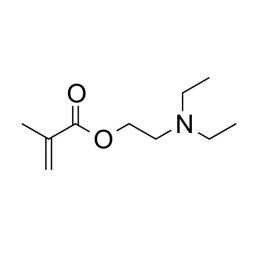 2-(N,N-Diethylamino)ethyl methacrylateCatalog Number 01872
2-(N,N-Diethylamino)ethyl methacrylateCatalog Number 01872Preparation of cationic polymers, especially quaternary ammonium polymers.
-
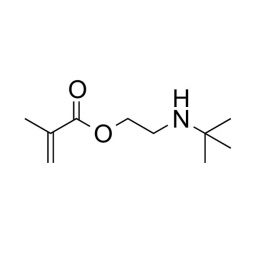 2-(tert-Butylamino)ethyl methacrylate, min. 90%Catalog Number 01797
2-(tert-Butylamino)ethyl methacrylate, min. 90%Catalog Number 01797Secondary amine monomer.
-
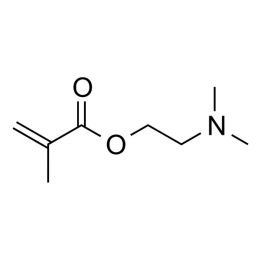 2-(N,N-Dimethylamino)ethyl methacrylate, min. 99%Catalog Number 00213
2-(N,N-Dimethylamino)ethyl methacrylate, min. 99%Catalog Number 00213For preparation of cationic polymers, especially quaternary ammonium polymers.
-
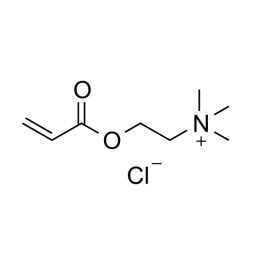 2-Acryloxyethyltrimethylammonium chlorideCatalog Number 17981
2-Acryloxyethyltrimethylammonium chlorideCatalog Number 17981For preparation of water-soluble cationic polymers, introduction of cationic sites.
80% Solution in water
-
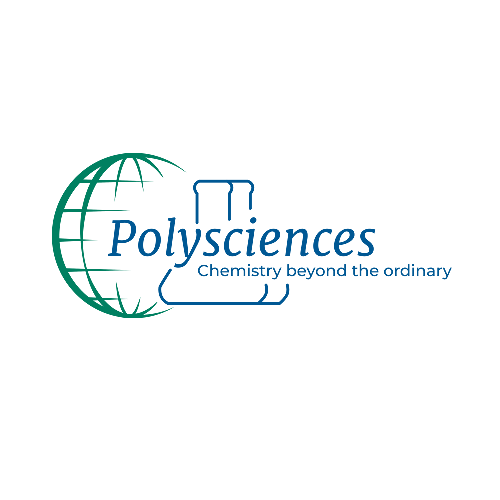 12-Tungstosilicic AcidCatalog Number 03424
12-Tungstosilicic AcidCatalog Number 03424Catalyst for organic synthesis, minerals separation, reagent for alkaloids.
(silicotungstic Acid)
-
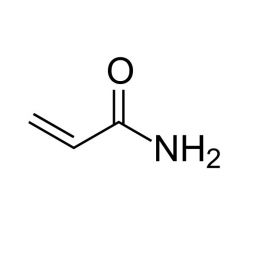 Acrylamide, Chemzymes Ultra Pure®Catalog Number 00019
Acrylamide, Chemzymes Ultra Pure®Catalog Number 00019Specific conductance of 35% (w/v) solution 2µmho/cm. Used in electrophoresis for separation of nucleic acid fragments and proteins. For precision gels used in electro-phoresis and isoelectric focusing. Because of the low acidity levels of our acrylamide, binding of ampholytes is virtually eliminated and fine pH gradients can be established. Fluorescence-free gels are readily prepared. For scanning of gels n the UV region, our Ultra Pure grade acrylamide makes gels with baselines having very low "noise".
>99.9%
-
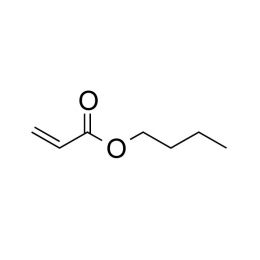 n-Butyl acrylate, min. 99%Catalog Number 02037
n-Butyl acrylate, min. 99%Catalog Number 02037Forms hydrophobic, low Tg polymers soluble in hydrocarbons.
-
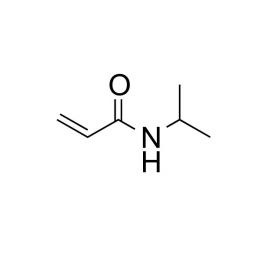 N-iso-PropylacrylamideCatalog Number 02455
N-iso-PropylacrylamideCatalog Number 02455Water-soluble monomers. Polymers are also water-soluble at room temperature but are insoluble at slightly higher temperatures.
-
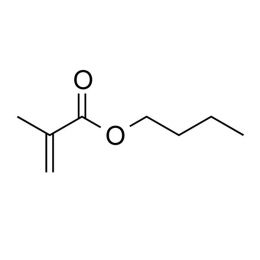 n-Butyl methacrylateCatalog Number 02059
n-Butyl methacrylateCatalog Number 02059Forms hydrophobic polymers soluble in hydrocarbons.
-
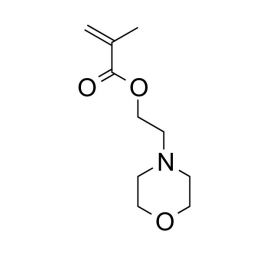 2-N-Morpholinoethyl methacrylate, >95%Catalog Number 17978
2-N-Morpholinoethyl methacrylate, >95%Catalog Number 17978Cationic monomer.
-
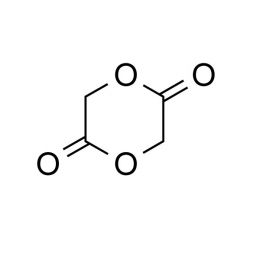 Glycolide, 99.9%Catalog Number 17085
Glycolide, 99.9%Catalog Number 17085For preparation of biodegradable polymers.
-
![2,2-Bis[4-(2-hydroxy-3-methacryloxypropoxy)phenyl]propane structure](https://www.polysciences.com/media/catalog/product/cache/41caa8e834a03fb3ab31ba2c24269124/0/3/03344.jpg) 2,2-Bis[4-(2-hydroxy-3-methacryloxypropoxy)phenyl]propaneCatalog Number 03344
2,2-Bis[4-(2-hydroxy-3-methacryloxypropoxy)phenyl]propaneCatalog Number 03344Rigid, hydrophobic, Crosslinking monomer
(Bis-GMA)
-
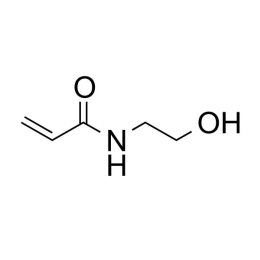 N-Hydroxyethyl acrylamide (HEAA), 98%Catalog Number 25109
N-Hydroxyethyl acrylamide (HEAA), 98%Catalog Number 25109Increases hydrophilic properties of polymers when copolymerized into a range of acrylate and methacrylate systems. Has been used in hydrogel systems for ocular delivery of ophthalmic drugs. The homopolymer has been used as a novel adsorbed coating for protein separation by capillary electrophoresis.
-
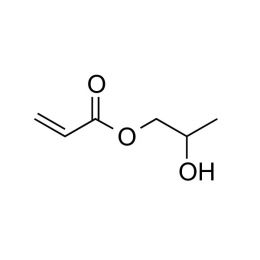 2-hydroxypropyl acrylateCatalog Number 25353
2-hydroxypropyl acrylateCatalog Number 253532-hydroxypropyl acrylate will increase the hydrophilic properties of polymers when copolymerized into a range of acrylate and methacrylate systems. This monomer has been used in hydrogel polymers and in RAFT polymerizations.
This product is a mixture of isomers in the approximate ratio of: 75% 2-hydroxypropyl acrylate, 25% 1-methyl-2-hydroxyethyl acrylate.
-
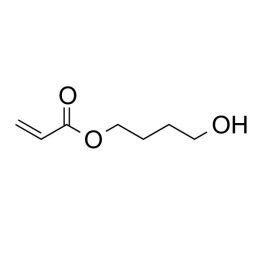 4-hydroxybutyl acrylateCatalog Number 25352
4-hydroxybutyl acrylateCatalog Number 25352Increases hydrophilic properties of polymers when copolymerized into a range of acrylate and methacrylate systems. Used in polymers for contact lenses and other ophthalmic devices.
-
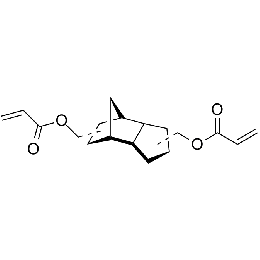 Tricyclodecane dimethanol diacrylateCatalog Number 25110
Tricyclodecane dimethanol diacrylateCatalog Number 25110High refractive index monomer which exhibits low volume shrinkage in polymerization.
Used in optical lens and optical fiber applications due to its high refractive index. Has also been used in dental composite applications for its low volume shrinkage.
-
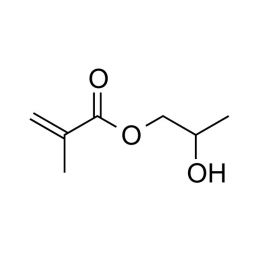 Hydroxypropyl methacrylate, mixture of isomersCatalog Number 00730
Hydroxypropyl methacrylate, mixture of isomersCatalog Number 00730Hydrophilic monomer.
-
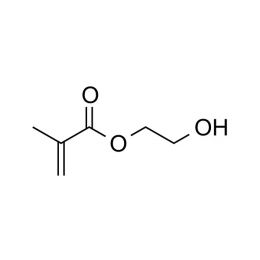 2-Hydroxyethyl methacrylate, Low Acid GradeCatalog Number 03699
2-Hydroxyethyl methacrylate, Low Acid GradeCatalog Number 036992-Hydroxyethyl methacrylate (HEMA) is perhaps the most widely studied and used neutral hydrophilic monomer. The monomer is soluble, its homopolymer is water-insoluble but plasticized and swollen in water. This monomer is the basis for many hydrogel products such as soft contact lenses, as well as polymer binders for controlled drug release, absorbants for body fluids and lubricious coatings. As a comonomer with other ester monomers, HEMA can be used to control hydrophobicity or introduce reactive sites.
-
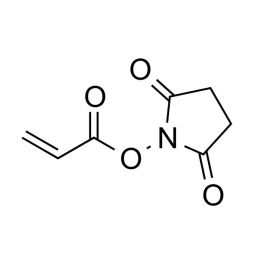 N-AcryloxysuccinimideCatalog Number 19930
N-AcryloxysuccinimideCatalog Number 19930For preparation of acrylic derivatives, e.g., of biologically active compounds or dyes either in monomer or polymer form under mild conditions.
-
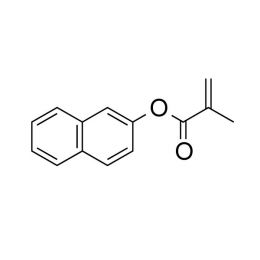 2-Naphthyl methacrylateCatalog Number 23602
2-Naphthyl methacrylateCatalog Number 23602PolyFluor® 345. Fluorescent monomer.
Exc. max: 285nm Em. max: 345nm
-
 3-Phenoxy 2 hydroxy propyl methacrylate (PHPM)Catalog Number 25506
3-Phenoxy 2 hydroxy propyl methacrylate (PHPM)Catalog Number 25506Hydrophilic monomer useful in medical device and ophthalmic applications.
-
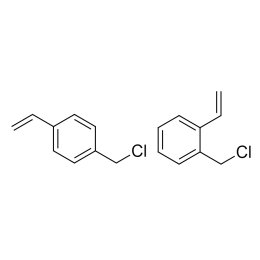 Chloromethylstyrene, mixture of isomers, ≥ 97%Catalog Number 02718
Chloromethylstyrene, mixture of isomers, ≥ 97%Catalog Number 02718Reactive styrene monomer. Can be used to prepare Merrifield resins without using a chloromethylation step.
(vinylbenzyl chloride)
Typically contains isomer ratio of Ortho (15 - 50%), Para (50 - 85%).
-
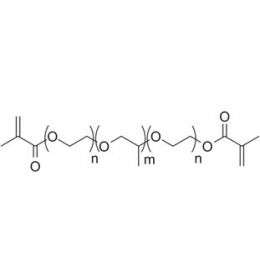 PEO(5800)-b-PPO(3000)-b-PEO(5800) dimethacrylateCatalog Number 25430
PEO(5800)-b-PPO(3000)-b-PEO(5800) dimethacrylateCatalog Number 25430Long-chain hydrophilic, crosslinking macromonomer. Triblock copolymer with methacrylate endgroups contains blocks of PEO and PPO to provide a balance of hydrophilic and hydrophobic properties.
-
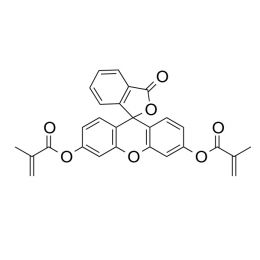 Fluorescein dimethacrylateCatalog Number 23589
Fluorescein dimethacrylateCatalog Number 23589(3’,6’-dimethacryloxyspirobenzo[c]-furan[1,9’]xanthen-3-one; PolyFluor® 511)
Fluorescent monomer. Off-white crystals.
Ex. max: 470nm Em. max: 511nm
-
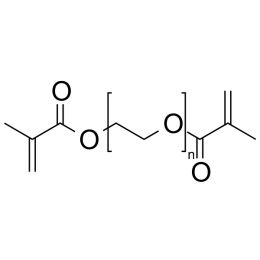 Polyethylene glycol dimethacrylate (PEGDMA 8000)Catalog Number 25428
Polyethylene glycol dimethacrylate (PEGDMA 8000)Catalog Number 25428Long-chain hydrophilic, crosslinking monomer. Molecular weight of PEG unit is approximately 8,000.
-
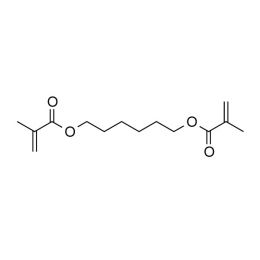 1,6-Hexanediol dimethacrylate, min 98%Catalog Number 23672
1,6-Hexanediol dimethacrylate, min 98%Catalog Number 23672Crosslinking monomer
-
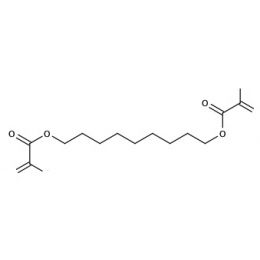 1,9-Nonanediol dimethacrylateCatalog Number 00801
1,9-Nonanediol dimethacrylateCatalog Number 00801Long-chain crosslinking monomer.
-
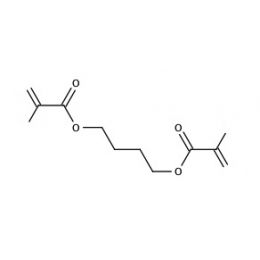 1,4-Butanediol dimethacrylate, min. 90%Catalog Number 05973
1,4-Butanediol dimethacrylate, min. 90%Catalog Number 05973Crosslinking monomer
-
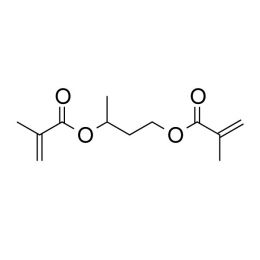 1,3-Butanediol dimethacrylate, 98%Catalog Number 02047
1,3-Butanediol dimethacrylate, 98%Catalog Number 02047Crosslinking monomer.
-
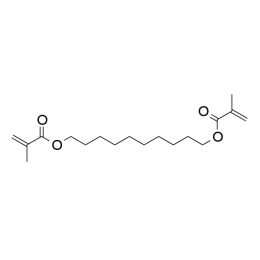 1,10-Decanediol dimethacrylateCatalog Number 02140
1,10-Decanediol dimethacrylateCatalog Number 02140Hydrophobic, long-chain crosslinking monomer.
-
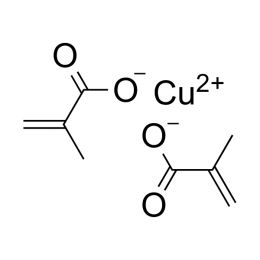 Copper (II) methacrylateCatalog Number 21222
Copper (II) methacrylateCatalog Number 21222Metal salt of methacrylic acid
-
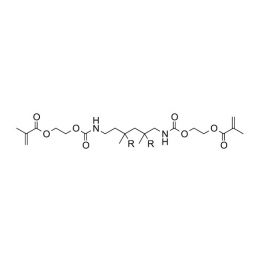 Diurethane Dimethacrylate (DUDMA)Catalog Number 21619
Diurethane Dimethacrylate (DUDMA)Catalog Number 21619(Diurethane dimethacrylate) Long chain-length crosslinking monomer
-
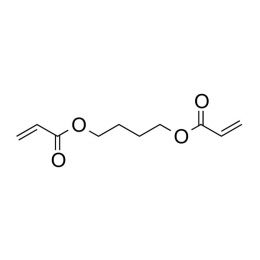 1,4-Butanediol diacrylate, min. 85%Catalog Number 02049
1,4-Butanediol diacrylate, min. 85%Catalog Number 02049Crosslinking monomer
-
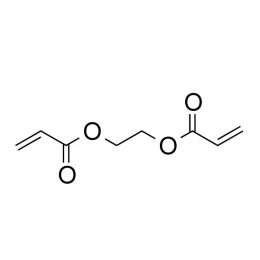 Ethylene glycol diacrylate (EGDA)Catalog Number 02302
Ethylene glycol diacrylate (EGDA)Catalog Number 02302Crosslinking monomer EGDA
-
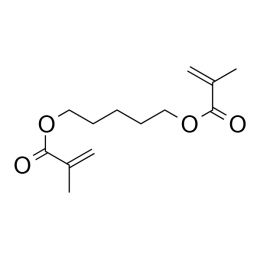 1,5-Pentanediol dimethacrylateCatalog Number 04260
1,5-Pentanediol dimethacrylateCatalog Number 04260Crosslinking monomer.
-
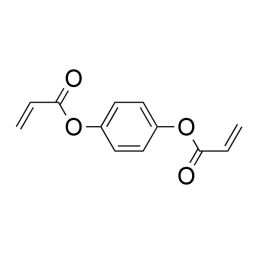 1,4-Phenylene diacrylateCatalog Number 06389
1,4-Phenylene diacrylateCatalog Number 06389Rigid aromatic crosslinking monomer
-
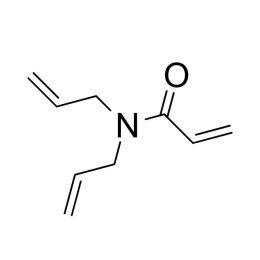 N,N-DiallylacrylamideCatalog Number 01848
N,N-DiallylacrylamideCatalog Number 01848 -
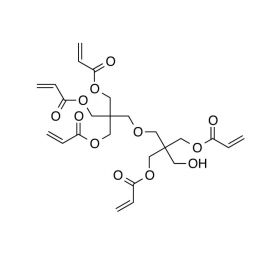 Dipentaerythritol pentaacrylate (mixture of tetra-, penta-, hexaacrylate)Catalog Number 16311
Dipentaerythritol pentaacrylate (mixture of tetra-, penta-, hexaacrylate)Catalog Number 16311Highly efficient crosslinking monomer, used especially in UV curing coatings.
-
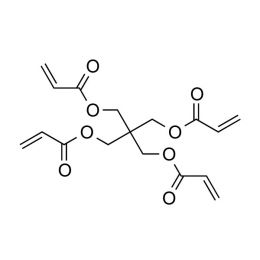 Pentaerythritol tetraacrylateCatalog Number 01547
Pentaerythritol tetraacrylateCatalog Number 01547Crosslinking monomer
-
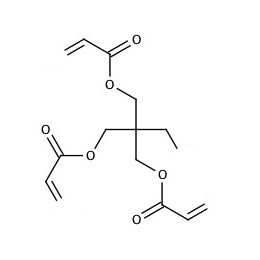 1,1,1- Trimethylolpropane triacrylate (TriMPTA)Catalog Number 02658
1,1,1- Trimethylolpropane triacrylate (TriMPTA)Catalog Number 02658Crosslinking monomer
-
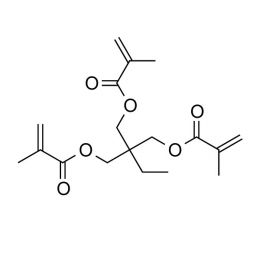 1,1,1-Trimethylolpropane trimethacrylateCatalog Number 02659
1,1,1-Trimethylolpropane trimethacrylateCatalog Number 02659Crosslinking monomer
-
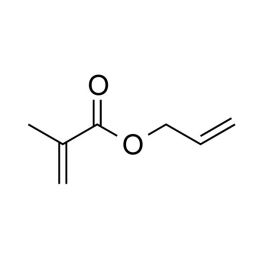 Allyl methacrylateCatalog Number 01643
Allyl methacrylateCatalog Number 01643Contains polymerizable units of differing reactivity, methacrylate moiety being more reactive than allyl.
-
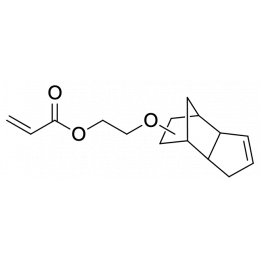 Dicyclopentenyloxyethyl acrylateCatalog Number 15797
Dicyclopentenyloxyethyl acrylateCatalog Number 15797Double bond in dicyclopentenyl does not participate in polymerization but can be post-reacted, e.g., by oxidative crosslinking
-
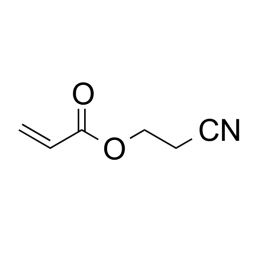 2-Cyanoethyl acrylateCatalog Number 01829
2-Cyanoethyl acrylateCatalog Number 01829Polar acrylate ester used in a wide range of applications including photocurable resists for liquid crystal devices, photocurable polymer insulators for multilayer circuitry, electroluminescent products, graft polymers for controlled diffusion, vulcanization of rubbers and as an adhesion promoter.
It is not to be confused with the alpha-cyano ethyl acrylate which is used in some Super Glue® products.
-
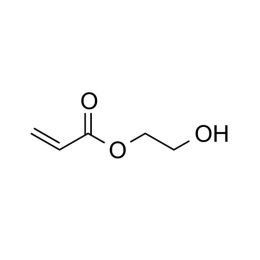 2-Hydroxyethyl acrylate, ≥ 97.5%Catalog Number 01902
2-Hydroxyethyl acrylate, ≥ 97.5%Catalog Number 01902Hydrophilic monomer, reactive site for reactions.
-
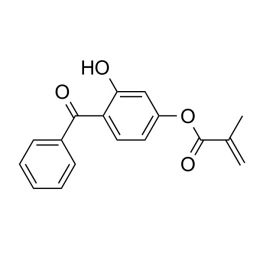 4-Methacryloxy-2-hydroxybenzophenone, min 99%Catalog Number 23350
4-Methacryloxy-2-hydroxybenzophenone, min 99%Catalog Number 23350UV absorbing monomer, especially for ophthalmic and optic applications
Min. 99% λ max (MeOH) 205nm (e = 3.03 x 104) 275nm (e = 1.18 x 104) 325nm (e = 7.23 x 103)
-
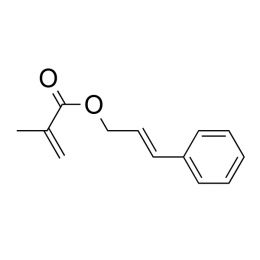 Cinnamyl methacrylateCatalog Number 02092
Cinnamyl methacrylateCatalog Number 02092Photocrosslinking monomer
-
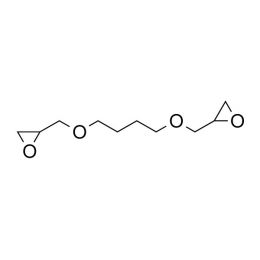 1,4-Butanediol diglycidyl etherCatalog Number 01795
1,4-Butanediol diglycidyl etherCatalog Number 01795For post-crosslinking reactions, preparation of aliphatic epoxy resins.
WPE ~130 (83º/0.3mm)
-
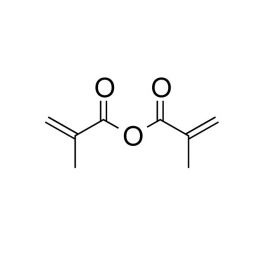 Methacrylic anhydrideCatalog Number 01517
Methacrylic anhydrideCatalog Number 01517Reactive monomer used primarily in preparation of other monomers under mild reaction conditions. Homopolymers are linear and contain cyclic anhydride units, uncrosslinked.
-
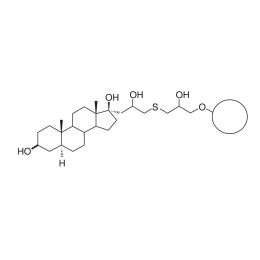 Androstan Sepharose® 6B Novel Immobilized Steroid BeadsCatalog Number 24858
Androstan Sepharose® 6B Novel Immobilized Steroid BeadsCatalog Number 24858Sepharose® 6B affinity chromatography beads covalently modified with steroids or other ligands such that ligand binding to receptors is not compromised resulting in high receptor-binding specificity.
-
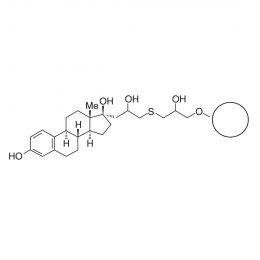 Estradiol Sepharose® 6B Novel Immobilized Steroid BeadsCatalog Number 24861
Estradiol Sepharose® 6B Novel Immobilized Steroid BeadsCatalog Number 24861Sepharose® 6B affinity chromatography beads covalently modified with steroids or other ligands such that ligand binding to receptors is not compromised resulting in high receptor-binding specificity.
-
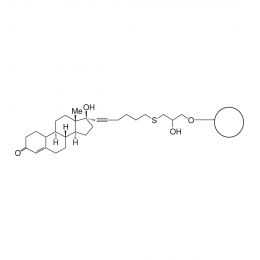 Nortestosterone Sepharose® 6B Novel Immobilized Steroid BeadsCatalog Number 24860
Nortestosterone Sepharose® 6B Novel Immobilized Steroid BeadsCatalog Number 24860Sepharose® 6B affinity chromatography beads covalently modified with steroids or other ligands such that ligand binding to receptors is not compromised resulting in high receptor-binding specificity.
-
 Divinylbenzene (80% Active)Catalog Number 22478
Divinylbenzene (80% Active)Catalog Number 22478Crosslinking monomer used primarily with styrene.
mixed mp,p-isomer impurities mainly m,p-ethylstyrenes 80% active (remainder mainly m,p-ethylvinylbenzenes)
-
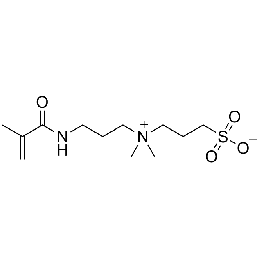 3-Sulfopropyldimethyl-3-methacrylamidopropylammonium, inner saltCatalog Number 16570
3-Sulfopropyldimethyl-3-methacrylamidopropylammonium, inner saltCatalog Number 16570Polar water-soluble monomer. Zwitterionic detergent and crosslinker.
(Dimethyl[3-methacrylamidopropyl]-3-sulfopropylammonium, inner salt)
-
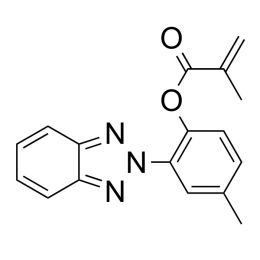 2-(2’-Methacryloxy-5’-methylphenyl)benzotriazoleCatalog Number 21871
2-(2’-Methacryloxy-5’-methylphenyl)benzotriazoleCatalog Number 21871UV absorbing monomer.
-
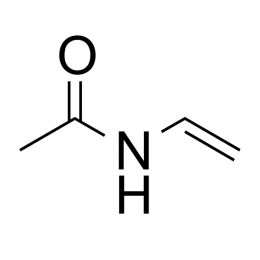 N-vinyl acetamide (NVA)Catalog Number 24806
N-vinyl acetamide (NVA)Catalog Number 24806Polymers produced from NVA offer a balance of hydrophilic and hydrophobic properties and find applications ranging from adhesives and thickeners to formulating aids to binders for inorganics.
Specific Gravity: 1.05 @ 20°C
This product is available both in convenient protective foil packages for laboratory scale and in bulk quantities for larger projects. Call for custom quotations on large orders.
-
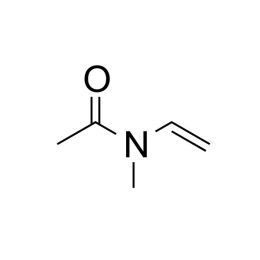 N-methyl-N-vinyl acetamideCatalog Number 22065
N-methyl-N-vinyl acetamideCatalog Number 22065Specialty monomer with affinity for water and solvents. Water white liquid has both hydrophobic and hydrophilic character, and is known to undergo polymerization reactions in water or in hydrocarbon solvents with traditional free radical catalysts. Versatility to react with co-monomers such as acrylamide, vinyl acetate and methyl methacrylate allows a wide range of polymeric compositions to be made.
Available in convenient protective foil packages for laboratory scale, and in bulk quantities for larger projects. Call for custom quotations on large orders.
-
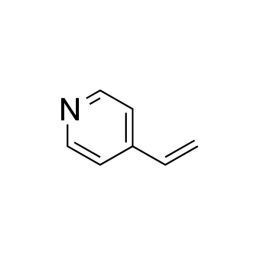 4-VinylpyridineCatalog Number 02668
4-VinylpyridineCatalog Number 02668Aromatic amine monomer.
-
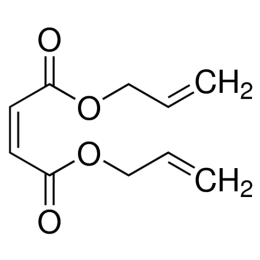 Diallyl MaleateCatalog Number 02156
Diallyl MaleateCatalog Number 02156Diallyl Maleate contains two allyl carboxylic esters which enables use in adhesives and resins. Purity ≥ 97.0%
-
 Vinyl azlactoneCatalog Number 21329
Vinyl azlactoneCatalog Number 21329Reactive heterocyclic monomer. Hydrolyzes to N-acryloyl-2-methylalanine.
-
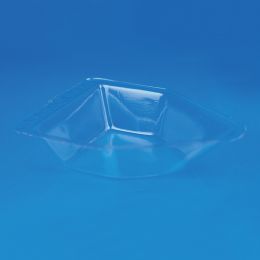 Plastic weighing dish (1 carton)Catalog Number 19803A
Plastic weighing dish (1 carton)Catalog Number 19803AThis is our Peel-A-Way® weighing "tray" and designed for easy pouring. These handy little dishes can be used for all sorts of applications in the laboratory in addition to their intended use of weighing materials.
-
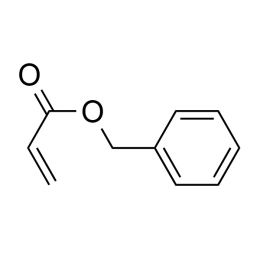 Benzyl acrylate, ≥ 99%Catalog Number 26296
Benzyl acrylate, ≥ 99%Catalog Number 26296 -
 Nile Blue MethacrylamideCatalog Number 25355
Nile Blue MethacrylamideCatalog Number 25355 -
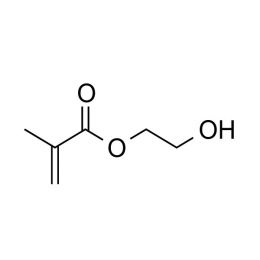 2-Hydroxyethyl methacrylate, Ophthalmic GradeCatalog Number 04675
2-Hydroxyethyl methacrylate, Ophthalmic GradeCatalog Number 046752-Hydroxyethyl methacrylate (HEMA) is perhaps the most widely studied and used neutral hydrophilic monomer. The monomer is soluble, its homopolymer is water-insoluble but plasticized and swollen in water. This monomer is the basis for many hydrogel products such as soft contact lenses, as well as polymer binders for controlled drug release, absorbants for body fluids and lubricious coatings. As a comonomer with other ester monomers, HEMA can be used to control hydrophobicity or introduce reactive sites.
glycol methacrylate
Opthalmic grade: Purity %=min. 99; Acid Content %=max 0.05; EGDMA content %=max 0.15; Color=30
-
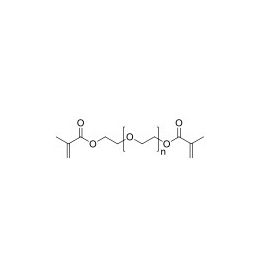 Polyethylene glycol dimethacrylate (PEGDMA 400)Catalog Number 15179
Polyethylene glycol dimethacrylate (PEGDMA 400)Catalog Number 15179Long-chain hydrophilic, crosslinking monomer. Molecular weight of PEG unit is approximately 400.
-
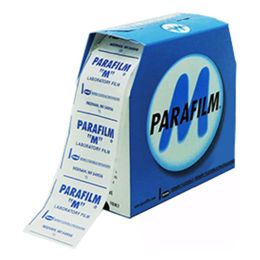 Parafilm M, 2" x 250'Catalog Number 3989B
Parafilm M, 2" x 250'Catalog Number 3989BA versatile, stretchable, moldable, waterproof, odorless, and self-adhering thermoplastic parafilm roll is used for sealing or protecting vessels such as flasks or cuvettes.
-
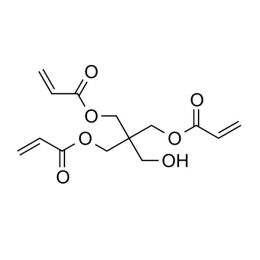 Pentaerythritol triacrylateCatalog Number 04259
Pentaerythritol triacrylateCatalog Number 04259Crosslinking monomer
-
 Methyl Methacrylate, min 99.5%Catalog Number 00834
Methyl Methacrylate, min 99.5%Catalog Number 00834Widely used in preparation of stable, hard, polymers.
-
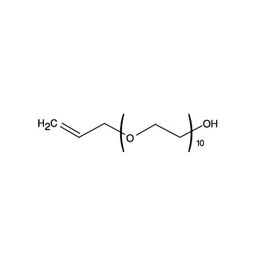 Hydroxypolyethoxy (10) Allyl Ether, 98%Catalog Number 24899
Hydroxypolyethoxy (10) Allyl Ether, 98%Catalog Number 24899Difunctional molecule reactive in vinyl polymerization through its allylic group, to impart hydrophilic properties to aqueous solution or emulsion polymers. Hydroxypolyethoxy (10) Allyl Ether is a high purity material, clear, slightly viscous liquid (5 cps at 20°C) which undergoes partial solidification below 10°C to form a viscous paste. In particular, solution copolymers of Hydroxypolyethoxy (10) Allyl Ether with Acrylic acid have shown useful properties as dispersants and scale inhibitors in boiler water applications.
-
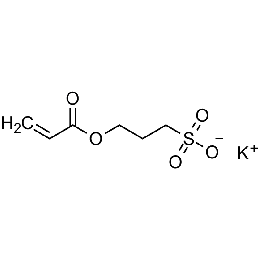 3-Sulfopropyl acrylate, potassium salt (SPAK)Catalog Number 17209
3-Sulfopropyl acrylate, potassium salt (SPAK)Catalog Number 17209 -
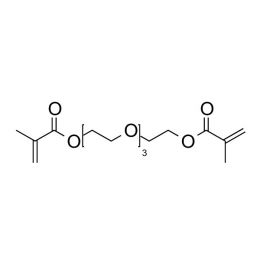 Tetraethylene glycol dimethacrylateCatalog Number 02654
Tetraethylene glycol dimethacrylateCatalog Number 02654 -
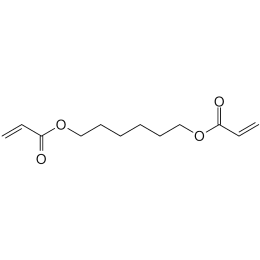 1,6-Hexanediol diacrylateCatalog Number 23671
1,6-Hexanediol diacrylateCatalog Number 23671Crosslinking monomer.
-
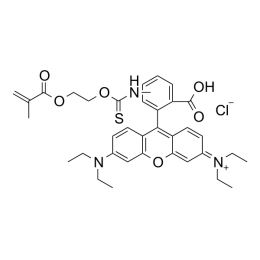 Methacryloxyethyl thiocarbamoyl rhodamine BCatalog Number 23591
Methacryloxyethyl thiocarbamoyl rhodamine BCatalog Number 23591N-[9-(2-carboxy-x-methacryloxy-ethylthiocarbamoylphenyl)-6-diethylamino-3H-xanthen-3-ylidene]-N-ethyl-ethanaminium chloride; PolyFluor® 570
Fluorescent monomer.
Ex. max: 548nm Em. max: 570nm
-
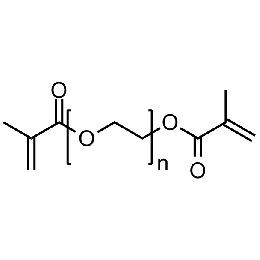 Polyethylene glycol dimethacrylate (PEGDMA 20000)Catalog Number 25406
Polyethylene glycol dimethacrylate (PEGDMA 20000)Catalog Number 25406Long-chain hydrophilic, crosslinking monomer.
Molecular Weight of PEG unit is approximately 20,000.
-
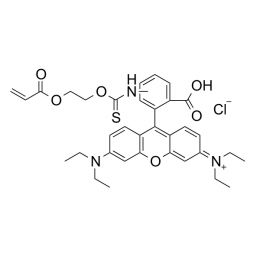 Acryloxyethyl thiocarbamoyl Rhodamine BCatalog Number 25404
Acryloxyethyl thiocarbamoyl Rhodamine BCatalog Number 25404Fluorescent monomer useful for labeling polymers.
- Ex. max: 548nm
- Em. max: 570nm
-
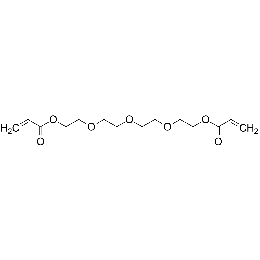 Tetraethylene glycol diacrylate (TetEGDA)Catalog Number 01668
Tetraethylene glycol diacrylate (TetEGDA)Catalog Number 01668Long-chain hydrophilic, crosslinking monomer.
-
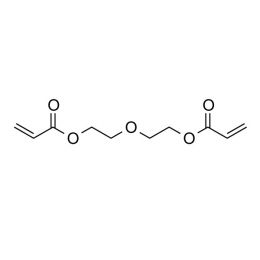 Diethylene glycol diacrylate (DEGDA)Catalog Number 02215
Diethylene glycol diacrylate (DEGDA)Catalog Number 02215 -
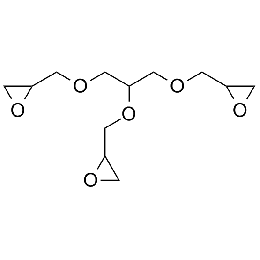 Glycidyl Glycerol-Ether, PolyfunctionalCatalog Number 09221
Glycidyl Glycerol-Ether, PolyfunctionalCatalog Number 09221Effective crosslinker for hydroxyl-, amine-, and carboxylic acid-functional polymers. Contains a mixture of mono, di and tri epoxides.
-
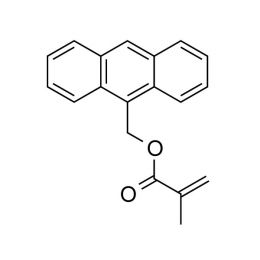 9-Anthracenylmethyl methacrylate, ≥ 98.5%Catalog Number 23587
9-Anthracenylmethyl methacrylate, ≥ 98.5%Catalog Number 23587Fluorescent monomer. PolyFluor® 407
Ex. max: 362nm Em. max: 407nm
Purity (HPLC): ≥ 98.5% -
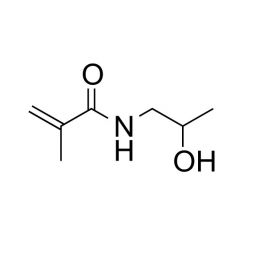 N-(2-Hydroxypropyl)methacrylamide (HPMA)Catalog Number 08242
N-(2-Hydroxypropyl)methacrylamide (HPMA)Catalog Number 08242Hydrolytically stable hydrophilic monomer.
-
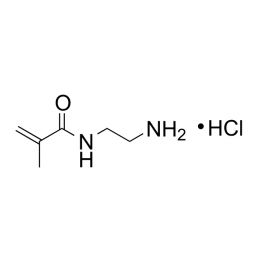 N-(2-aminoethyl) methacrylamide hydrochlorideCatalog Number 24833
N-(2-aminoethyl) methacrylamide hydrochlorideCatalog Number 24833Monomer building block for polymerization reactions which may yield a primary amine functional monomer.
Physical Properties:
White to off-white free flowing powder
